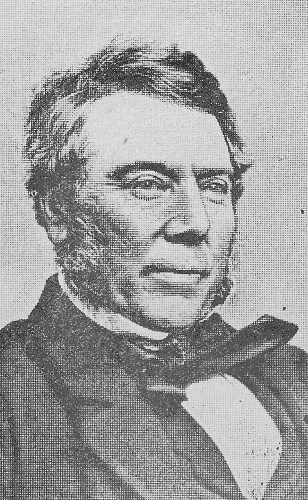
Samuel Mills from F. W. Hackwood's "A History of Darlaston", 1887. |
The Mills family began as a
working-class family with their own business, and
suffered a great tragedy when the bread-earner died at
an early age. Out of adversity the family went on to
become one of the wealthiest families in Darlaston,
thanks to a wise marriage, and excellent business
abilities.
Samuel's father, Thomas Fellows
Mills was a butcher, who died in 1806 at the age of 23.
He left behind his 27 year old widow Elizabeth, and
Samuel, just under one year old. In 1813 Elizabeth
married Richard Bills.
In 1826,
Richard, a gunlock maker of Church Street, established a
furnace and foundry at Furnace Lane, Lower Green, where
Heath Road is today. He made his stepson Samuel Mills a
full partner on his 21st birthday, and the company
became known as Bills & Mills. Richard died in 1849 and
Samuel took over the business which grew to become the
largest iron and steel company in the area. The company
also owned many coal mines, a factory in Bell Street,
Darlaston, and a great deal of land.
Samuel married 22
year old Phoebe Tilley at St. Lawrence's Church on 16th
March, 1830 and they purchased their first house at Caldmore, where their first three children were born.
They were Martha, Thomas and Ellen. Thomas died
when just 15 months old.
|
|
Seven years later the family moved to
Kings Hill Field, possibly situated on Walsall Road, and
two more children soon followed; Elizabeth and Phoebe.
Another daughter,
Alice, was born in 1853. Sadly she died on
30th January, 1855 aged 16 months.
The family next moved to Poplar House at
31 King Street where ASDA is today. The house is
remembered because of the famous Victorian novelist Mrs
Henry Wood, a relative of the Mills family, who wrote
part of her successful book ‘East Lynne’ at the house
while staying there. It was published in 1861. The house
later became a girls’ school, and then a shop, after it
was acquired by William Walker Stanbury. Most of the
older inhabitants will remember the shop which was a
tailors and outfitters. The Mills family finally moved
to Darlaston House in Pardoes Lane, on the western end
of what is now Victoria Park.
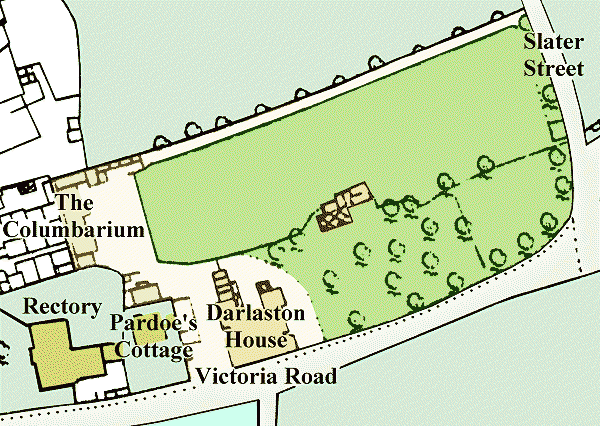
The location of Darlaston House.
|
| They had ten children,
including Thomas, and Alice who died young. The
others were Anna, Elizabeth, Ellen, Jane, Martha,
Mary, Phoebe, and Richard. Elizabeth married local
solicitor, James
Slater in 1861, Ellen married the Reverend James Loy
Clerk. |
|
Martha, Jane and
Richard never married. Samuel died on 17th December, 1864
at Darlaston House, and his
wife Phoebe died on 5th April, 1883. Their son Richard
died on 3rd April, 1884 at the age of 38. The original All Saints
Church in Walsall Road was built in 1872 in Samuel's
memory.
Darlaston House stood on the
western end of what is now Victoria Park. The house and
its surrounding land occupied the modern Rectory Avenue,
the Post Office, and the area behind Pardoe's Cottage,
where the dovecote still stands. It had previously been
a ladies' boarding school, run by a Miss Cartwright.
In the 1920s when foundations
were dug for the war memorial in Victoria Road, the
ground gave way to reveal part of the cellars of
Darlaston House. The workmen found a number of bottles
of wine, much of which was drunk there and then,
although some bottles of parsnip wine did find their way
to The Green Dragon in Church Street, were they went on
sale. The original All Saints Church in Walsall Road was
built in 1872 in memory of Samuel Mills, who died in
1864. All Saints’ National School in Whitton Street
which opened in July 1874 was paid for by the Mills
family. |
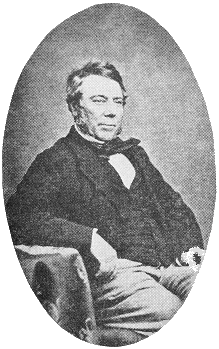
Samuel Mills. |
|
Samuel was a churchwarden at St.
Lawrence’s Church in 1853, 1858, and 1865. His son
Richard was also a churchwarden during 1884, the year of
his death.
Samuel Mills became a large
landowner. Although most of his land was used for
mining, the area between Station Street, Bull Street,
Bills Street, and Walsall Road was used for housing.
Several streets were built on the land including Tilley Street, named after
Phoebe, Bills Street, named after Richard and Elizabeth,
and Whitton Street, named after the family's country
home.
Samuel also owned Hill Farm at
Great Barr; Allens Farm at The Delves, Walsall; Yew
Tree Farm at Delves Green, Walsall; and Brockhurst
Farm, Wednesbury.
The largest land-owning family in
this part of the Black Country were the Levesons who had
large houses in Willenhall and Wolverhampton. They
married well, becoming the Leveson-Gowers, the Dukes of
Sutherland. They owned a lot of property and coal mines
in Darlaston. Long after the family had left the area,
they sold the bulk of their Darlaston properties and
coal mines to the Mills family and the Addenbrooke
family. One of the pieces of land included the site of
St. George’s Vicarage, which was given to the church by
Addenbrooke, Smith and Pidcock.
Samuel Mills became a wealthy man,
thanks to the success of Bills & Mills, and the earnings
from his many collieries in the area. In 1855 he leased
the Essington Wood Colliery which was situated on the
western side of Bursnips Road, Essington. He purchased
the colliery in 1860 and ran it as a separate business
alongside Bills & Mills.
| The family owned a grand country house (now
Grade 1 listed), Whitton Court, Whitton, near
Ludlow, where they must have lived in some
style.
They also owned three farms at Whitton;
Whitton Farm, Court Farm, Whiteway Head Farm,
and several small tenements. |

Whitton Court from Leach's
County Seats of Shropshire, 1891. |
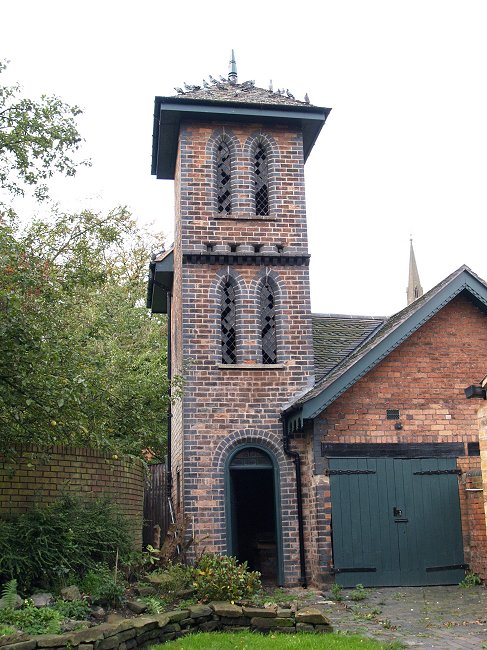
The
Columbarium in 2006. Courtesy of
Kevin McKeown.
|
After Samuel’s death in
1864, Martha and Jane continued to live in
Darlaston House until the turn of the
century.
Jane, a public spirited lady who did much
for the town, was born in 1848.
She founded an
institute in connection with the Parish
Church to help the needy women and girls of
Darlaston. A building was erected near to
Darlaston House to house the institute. It
was given to the town when Jane and Martha
left Darlaston and moved to Whitton Court at
the beginning of the 20th century. The
institute, later known as the "Mothers
Meeting and Girl's Institute" eventually
became a clinic and later "The Sons of
Rest". The building is now a family home.
Jane and Martha gave the land on which Darlaston House was
built, to the town, for use as a public park. Victoria Park opened in 1902 as a
belated commemoration of Queen Victoria's
Diamond Jubilee. |
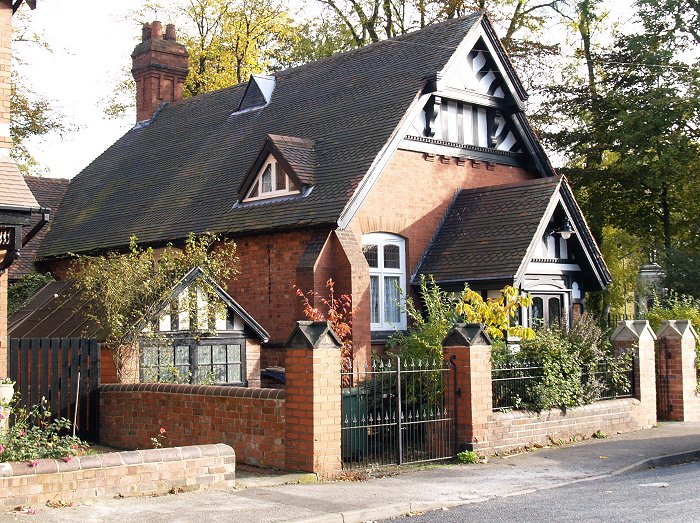
The Jane Mills Institute in
Rectory Avenue.
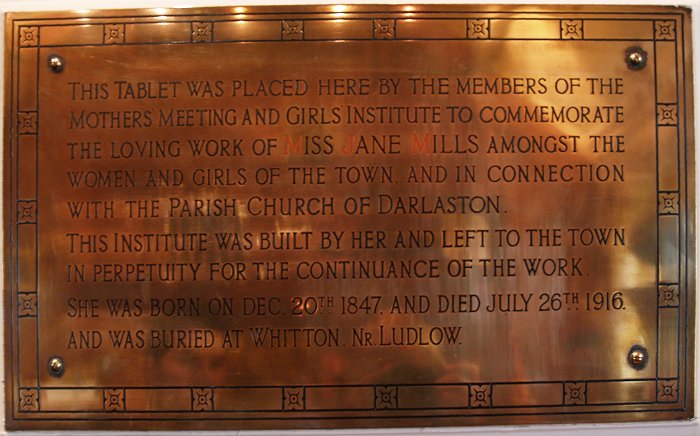
A tablet inside the Jane Mills
Institute.
Samuel Mills was also involved in
local government as a member of the Darlaston Board of
Surveyors. In 1846 the old system of Vestry Government
was finally abandoned and a Board of Surveyors
constituted. The traditional supremacy of the church was
not completely ignored, as members of the Board were
elected by a show of hands at a Vestry meeting. The
members of the Board were as follows:
George Jones –
Chairman, David Bowen, John Riley, William
Carter, Samuel Rubery,
Charles Green, Samuel Smith, and Samuel
Mills. |
George Jones was succeeded as
Chairman by Samuel Rubery who in turn was succeeded by
Samuel Mills.
In 1869 the Local Government Act of
1858 was adopted and a Local Board formed in preference
to the unsatisfactory Board of Surveyors. Twenty members
were elected by the ratepayers. The candidates included
almost everyone of note in the town, including Richard
Mills, son of Samuel and Phoebe. The successful
candidates were as follows:
George Addenbrooke,
William Marshall, G. B. Butler, Richard
Mills, A. Carter, C. Moore, William Corbett,
G. Perry, C. Green, M. Read, G. Green,
Samuel Rubery, Job Green,
James Slater, William Harper, Samuel Slater,
Enoch Horton, E. Wilkes, George Humpage, and
William Winn. |
The first meeting was held on 15th
February, 1870 in the upper room of the old malthouse
behind the White Lion in King Street.
All
Saints' Church and the Mills family
The parish of All Saints was formed
in 1872, the church being built and consecrated by
Bishop Selwyn in the same year. The building, in Early
English style was built of brick and designed by George
Edward Street, R.A. The church consisted of a nave,
aisles, vestry and a small turret with two exposed
bells. The building seated 500 adults and 40 children
and was erected as a memorial to Samuel Mills by his
widow and children. The church had one of the finest
stained-glass windows in Staffordshire, made by Morris
to the designs of the artist Sir Edward Burne-Jones, R.A.
and an organ built by Bryceson Brothers and Morton. The
church contained a magnificent wrought iron chancel
screen given by W. Martin Winn in memory of his father,
and a large brass lectern given by F.H. Lloyd &
Company.
In 1906 a piece of land adjacent to
the church was acquired by Mrs. Mills, Mr. Samuel Mills
Slater, and his brother Mr. Archibald Slater on which to build a parish hall. The land
was offered to the church at half-a-crown a square yard
and became an extension to the All Saints Day School
playground. The original purpose for purchasing the land
was forgotten and so the parish hall was not built until
the early 1930s after the original purpose had been
rediscovered. The church and parish hall were destroyed
by a bomb on 31st July, 1942 during a bombing raid on
Guest Keen & Nettlefolds' Atlas works. It made a crater
50ft. deep and 40ft. wide. Luckily there were no
casualties. This was the only church in the diocese of
Lichfield to be destroyed by enemy action.
On the same night a second bomb
landed on the cinder wall at the front of the Railway
Tavern at James Bridge. Luckily it failed to explode.
Inscriptions on the family monument in St. Lawrence’s
Church:
|
|
In memory of Thomas Fellows Mills,
who died on March 28th, 1806 aged 23 years.
Richard Bills who married Elizabeth, widow of the above.
He died on June 16th, 1849 aged 72 years.
Elizabeth, widow of the above Richard Bills, who died on
January 8th, 1861, aged 82 years.
Thomas, son of Samuel and Phoebe Mills who died on
November 8th, 1836, aged 15 months.
Alice, daughter of Samuel and Phoebe Mills who died on
January 30th, 1855 aged 16 months.
Samuel Mills, son of Thomas Fellows Mills who died on
December 17th, 1864 aged 59 years.
Phoebe, wife of Samuel Mills who died on April 5th, 1883
aged 74 years.
Phoebe, wife of the Rev. Henry Farrow, vicar of Fulford,
York, who died on Christmas day 1880, aged 41 years.
Ellen, wife of the Rev. James Loy, vicar of Neston,
Wiltshire, who died on November 23rd, 1882 aged 48
years.
Richard, son of Samuel and Phoebe Mills who died on
April 3rd, 1884 aged 38 years.
|
 |
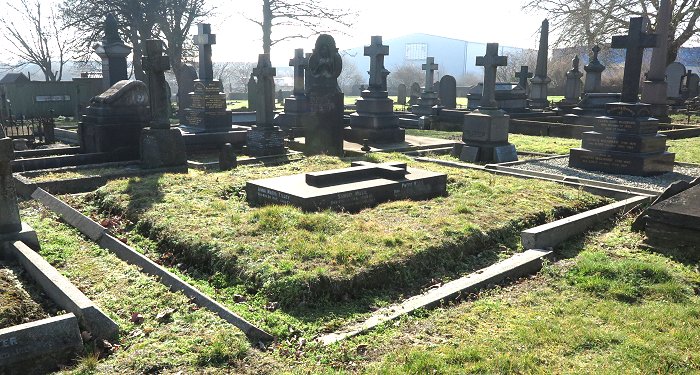
The Mills family's grave at
James Bridge Cemetery. The inscriptions are as
follows:
Samuel Mills died December 17th, 1864 aged 59 years,
Phoebe Mills died April 5th, 1883 aged 74 years,
Richard Mills died April 3rd, 1884 aged 38 years, Anna
Maria Tilley died May 24th 1887 aged 67 years, and
Thomas and Alice infant children of Samuel and
Phoebe Mills. |
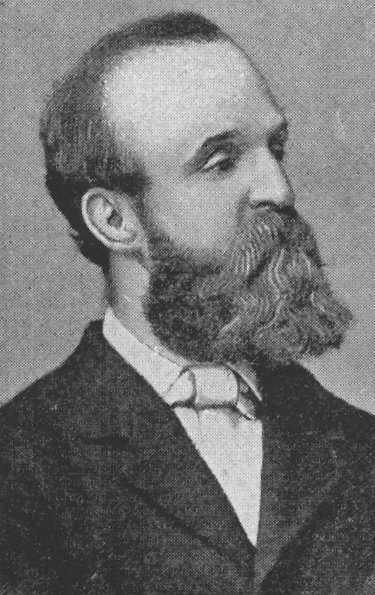
James Slater from Hackwood's
'A History of Darlaston', 1887. |
James was born
in New Street, Darlaston in 1836, the son of printer,
stationer and bookseller, Thomas Slater. The family soon
moved to King Street where Thomas opened a shop and a
printing works.
James was educated at Shifnal Grammar
School and afterwards articled to Wednesbury solicitor
J. H. Thursfield. James eventually became a solicitor and
ran his business at premises in Walsall Road. James
married 23 years old Elizabeth, daughter of
industrialist Samuel Mills, on 7th May, 1861. They had five
sons and six daughters.
He went into
partnership with W. Marshall, until Mr. Marshall’s
untimely death, after which James’ eldest son Archibald
ran the business with his father. The business grew to
become one of the largest of its kind in the area. One
of their clients was Sister Dora.
James
was a churchwarden at St. Lawrence's Church in 1869, a
member of Darlaston's first School Board, formed in
1883, Chairman of the Local Board, and laid the
foundation stone, and performed the opening ceremony at the Town Hall in October 1888. Slater Street
in Darlaston, and Slater Street in Willenhall are both named after him.
|
| James and his wife Elizabeth
purchased the Bescot estate, including Bescot Hall, in
April 1872, when the state was sold after the death of
the previous owner, William Crowther, who died in 1865.
James and Elizabeth lived there for the rest of their lives.
James died at the house on 26th October, 1901, and the
estate passed to the following trustees: his widow Elizabeth,
and sons Samuel Mills Slater, and Edward Tilley Slater.
In his will it is valued at £61,311.4s.8d. which is
about £3.5 million in today's money. Two years later
Elizabeth
presented the organ to Darlaston Town Hall in his
memory. The family must have had an extremely opulent
life style. After Elizabeth's death in April 1922, the house
remained empty for a while before it was purchased by
Pitt Bonarjee, a Congregational minister
at Wednesbury. In 1929-1930 the house was
demolished, and the land sold in several plots. |
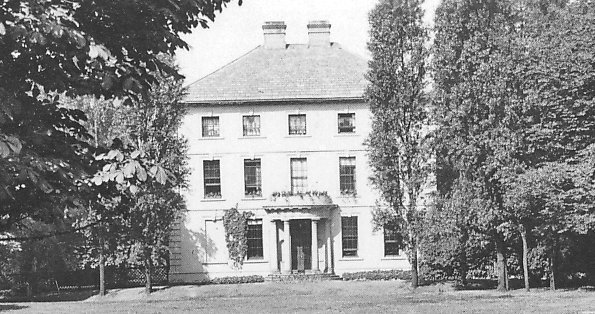
Bescot Hall, as it was when the Slater family
lived there.
| James was a member of the Wednesbury School Board from
1877 until 1889 and became chairman in 1884. At that time he
was a strong advocate for the union of Darlaston and
Wednesbury, proposed in December 1884. At a meeting in
Wednesbury he made the following speech:
The highest form of government and the loftiest position
of citizenship were to be found in the municipality.... It
would be better for Wednesbury if Darlaston was included in
the incorporation scheme. The larger the area and
rateability, the greater our communion with our fellow men,
and the larger the benefits derived from that
community....Darlaston and Wednesbury have been tied and
bound together inseparably to an extent which probably some
present have not realised. He pointed out that the
boundary lines in some places were so singular that one side
of the street was in Wednesbury, and the other in Darlaston.
He also stated that:
Many thousands of people who worked in Darlaston lived in
Wednesbury, and the converse was the case. Darlaston was
joined to Wednesbury by parliamentary representation.
....and he contended that it would be to the permanent
interest of both if they were joined together. The
scheme was opposed by Darlaston Local Board and abandoned. |
| From 1894, James was one of the directors of John
Harper & Company Limited in Willenhall, founded in 1888, and a Justice of the Peace, as
were two of his sons, Samuel and Maurice, who both sat on the
Willenhall Bench for many years. After his death,
Maurice succeeded him on the board of John Harper &
Company Limited. He later served on Darlaston Urban District Council. |

The back of Bescot Hall. |
| |
|
| Read a history of Bescot
Hall |
 |
| |
|
| James was one of the larger landowners in Darlaston and
developed Avenue Road and Gordon Street in the late 1880s.
Avenue Road was originally called Railway Street because it
ran alongside the railway cutting. The official naming
ceremony took place in June 1890, but the new inhabitants
who were some of the town's better-off citizens, objected to
'such a common name'. Around the turn of the century, trees
were planted to obscure the railway, and the street was
renamed Avenue Road. |
|

Samuel Mills Slater J.P. |
James' eldest son, Samuel Mills Slater J.P. born in 1863,
was educated at Oxford University and like his father,
became a solicitor .
He was elected as
Councillor for the Pleck Ward from 1902 until 1922, and
Mayor of Walsall in 1915, 1916, and 1917.
During his time as
Mayor, tragedy struck when his wife Mary Julia Slater died
from shock and septicaemia in hospital on 20th February,
1916.
She died as a result of the severe injuries to her
chest and abdomen received on
31st January, 1916 whilst riding on a number 16 tram with
her sister and sister-in-law. |
| The tram was badly damaged by a 20lb German
incendiary bomb dropped on Bradford Place, Walsall from
a Zeppelin airship during an air raid. She was the
eldest daughter of Birmingham solicitor C. T.
Saunders, and educated at Handsworth Ladies
College.
Mary was honorary secretary of the Childrens
League, and the Association for the Help of the Blind. She
was also very active in the local Red Cross Society and was
an accomplished artist and linguist.
Mary
died at the age of 55, and left behind a family of four sons
and one daughter, Mildred, who replaced her mother as
Mayoress of Walsall. Samuel Mills Slater later lived at The
Elms, Bescot Road, Walsall. |
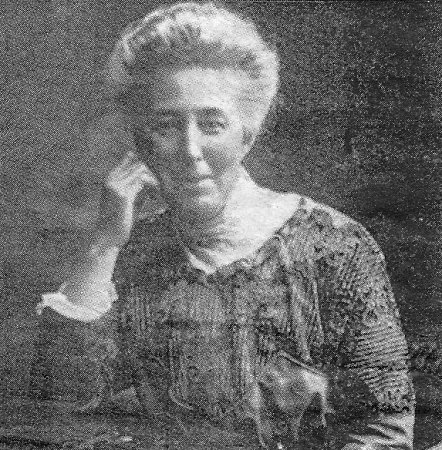
Mary Julia Slater. |
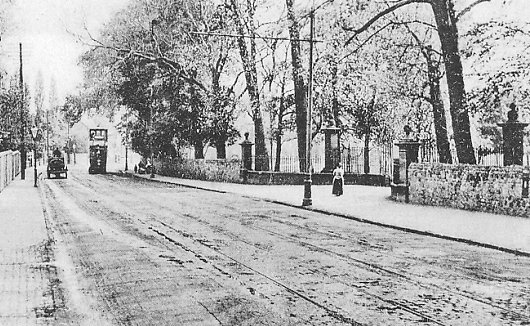
Bescot Road and the grand entrance to the
grounds of Bescot Hall.
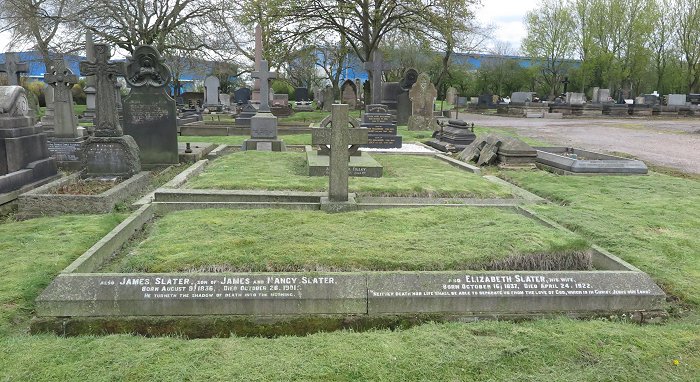
James and Elizabeth Slater's grave at James
Bridge Cemetery.
| William Winn was born at Mere Green, Sutton Coldfield in 1838.
His father was Joseph Winn. William had a sister, Mary
Ann, and a brother, Joseph, who died at an early age.
William served an apprenticeship at Mr. Overton's
grocers shop in Walsall, and became a successful and
well known shopkeeper in Darlaston with a
shop in Church Street and another below where he lived
in Pinfold Street, next to the Black Horse. William sold
grocery, provisions, wines and spirits, was a
pawnbroker, and became a
member of the Local Board and the first Urban District
Council in 1895.
He married Jane, who was born in 1847,
and eventually moved to one of Darlaston’s most
impressive Victorian houses, “Ilmington” in Crescent
Road. The house was named after Jane's birthplace, Ilmington in Warwickshire.
They had three children, one son and two daughters.
William’s shop at 21 Pinfold Street was the first building
in Darlaston to be lit by electricity. He purchased a
dynamo and capitalised on it by advertising when the
lights would be in operation. People came from all
around the Black Country to view the spectacle and he
always had many bargains on hand to sell to visitors.
|
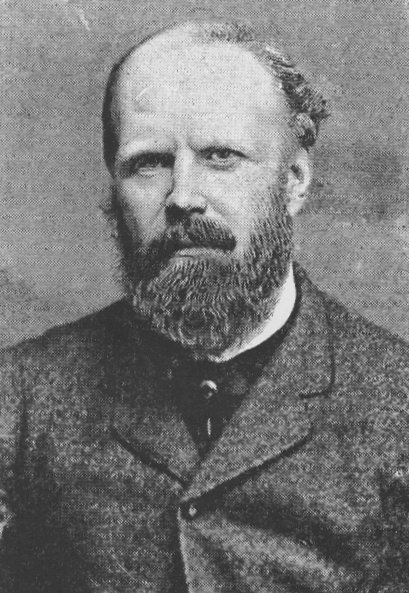
William Winn from
'A History of Darlaston'. F. W. Hackwood, 1887. |
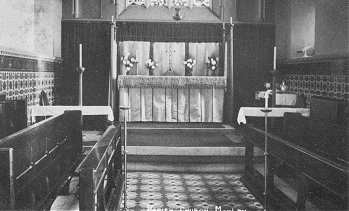
The
choir stalls donated by William to All
Saints' Church, Moxley. From an old
postcard. |
The choir stalls and clergy desks at All Saints' Church,
Moxley were gifts from William, as were the trees that
line Crescent Road. William was married three times,
and had three sons and two daughters. The sons
were Martin, James Percy, and Harold. The
youngest daughter was Mildred Mary, the other
was Jessica. |

William Winn.

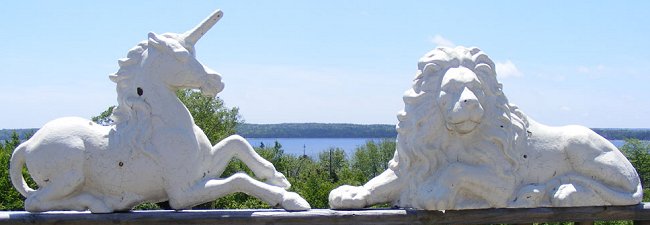
The unicorn and the lion that once
adorned the gates of Ilmington. Courtesy of John Oswell.
At the end of his life William suffered from
a serious illness. It was reported (in an
unknown newspaper) as follows:
| Illness of Mr.
William Winn We
hear with regret of the
serious illness of Mr.
William Winn, one of the
"old veterans" of
Darlaston, who has lived
in retirement for some
years past at Sutton
Coldfield. Mr. Winn is
not of this generation
in point of years, for
he was a well known
citizen on Darlaston in
the days when the public
men of today were still
in long clothes. He has
served the town well,
both as Councillor and
Guardian, and it was not
until advancing years
that he sought the cool
shades of retirement,
since when he has
resided at Sutton. Mr.
Winn has never lost his
interest in the town
where his sons carry on
business under the well
known style of Martin
Winn and Co. The illness
which has now laid him
aside, is of a character
which does not encourage
hopes of a complete
recovery, but Mr. Winn
is bearing it with
remarkable cheerfulness.
Weariness of spirit is
entirely alien to his
breezy outlook on life.
Past the eightieth
milestone, Mr. Winn's
brightness is a striking
contradiction of the
prophet's gloomy
contemplation of man's
prospects after he has
passed the allotted
span, and we hope that
this cheeriness and
buoyancy may continue to
sustain him in his
illness. |
|
|

| William
Winn in later life. Courtesy of his
great grandson, John Oswell. |
|
William died on 22nd March, 1917 after a
serious illness. His obituary (from an
unknown newspaper) is as follows:
| Death of Mr.
W. Winn of Darlaston
We have to record
with regret the
death of an old
Darlaston worthy,
Mr. William Winn,
who has been one of
the most prominent
figures in the
public life of the
town, and district
for considerably
over half a century.
He passed away in
his 80th year. The
public may have been
prepared for his
death for some time
ago we announced he
was suffering from
an illness of a
grave nature and
referred to the fine
and courageous
spirit he had
manifested
throughout, even
when he knew his
chances of recovery
were very slender. A
few days ago the
symptoms were of
such a serious
character that he
was removed to a
nursing home at
Birmingham, where an
operation was
performed, and he
passed peacefully
away on Thursday
morning. The late
Mr. Winn was born at
Mere Green, Sutton,
in the same year in
which the late Queen
Victoria was
crowned.
He served his
apprenticeship at
Mr. Overton's
grocer's shop,
Walsall. He
subsequently bought
a business at
Darlaston in 1862,
and this he
developed, and
successfully carried
on. He did not
narrow his life down
to his own business
interests, but he
took a very active
part in the public
life of the town,
and was associated
with all public
movements of a
social and
philanthropic
nature, whilst in
the political world
he was a very
combative figure,
and always hit hard,
but never below the
belt. He was a
member of the old
Local Board, and the
District Council,
and he was never
happier than when he
was on the public
platform, where he
was a speaker who
always appealed to a
Darlaston audience,
and caught on.
He supported Mr.
Brogden, the Hon.
Philip Stanhope, and
the candidates who
espoused the Liberal
cause. He left
Darlaston a few
years ago, and
sought retirement at
Sutton Coldfield,
but even then he did
not permanently
withdraw from public
life. He was
Chairman of the
Walsall Board of
Guardians for four
or five years, and
his colleagues on
this body had such a
high regard for his
services that
although he went to
live away on account
of ill health, they
co-opted him a
member of the Board.
When the public
buildings were
erected in Darlaston
in the year 1887,
the late Mr. Winn
was a handsome
subscriber to the
building fund, which
also included the
Town Hall.
He was thrice
married, his wife
having pre-deceased
him about six weeks
ago, and he has left
three sons, Mr.
Martin Winn, Mr. J.
Percy Winn (the
founders of Station
Works, James
Bridge), and Mr.
Harold Winn, and two
daughters. He was a
loyal churchman, and
was warden for some
time at Moxley
Church, to which he
generously gave
choir stalls.
He will be buried
in the family vault
at Mere Green. |
|
|
|
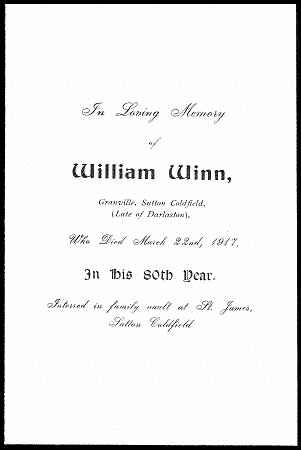
Courtesy of John Oswell. |
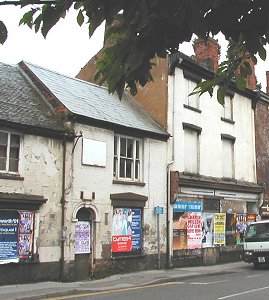 |
| The building on
the right is William's shop in Pinfold
Street, now Demolished. |
|
| George
Rose Chairman of the Council, Director
of J. & R. Rose, and a great benefactor to the town.
John George Rose was born in August 1867 at 32
Willenhall Street, Darlaston. His parents were
George and Ann Rose. George Rose senior was a
coalminer.
The couple had a shop in their front room selling
grocery and beer. It was initially run by Ann, but
in 1901 George is listed as a greengrocer, so he
must also have helped in the shop. They shared the
house with Ann’s mother, Ann Turner.
John George initially attended a small school in
Willenhall Street that was run by Mr. Belcher, and
later continued his education at Old Church School.
He left school in 1880 at the
age of 13 and went to work for his uncle, nut and
bolt maker, James Rose at J. & R. Rose, London
Works, Willenhall Street. The company was run by
James and Richard Rose. |
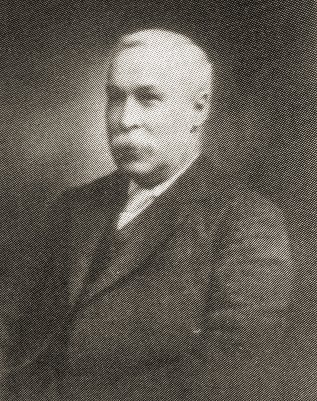
George Rose. |
|
By this time John George Rose
had decided to drop his first name to become known
as George Rose, like his father. He started work as
an errand boy, and through his own efforts moved up
to Company Secretary, and Director. He stayed with
the company for 44 years.
He married Mary Ann Harvey, a
grocer’s daughter. Around 1897 they moved into a
house at 50 Old Park Road, Wednesbury. In 1901 he
was elected councillor for All Saints Ward, and
remained as a member of Darlaston Council for the
rest of his life. In 1915 he moved with his wife and
son to ‘The Cottage’ a large Georgian house that
stood on the corner of Church Street and Waverley
Road. It had been built in the late 18th century by
Julia Foster, whose family kept the nearby Bell
public house.
From 1911 to 1914, and again in 1919 until his
death, he was Chairman of the Council. He was also a
Justice of the Peace, founder president of the
Darlaston Allotments Association, actively involved
in the Nursing Institute, and a supporter of
Darlaston Football Club.
He is, and always will be,
associated with the park that carries his name;
George Rose Park. It was built between 1921 and 1924
and provided casual work for over 700 unemployed
people in the town. The project was instigated by
George as a pleasure park that would be an important
amenity for the town. He not only pushed the project
through, but also ensured that it would benefit many
of the unemployed people, providing a much needed
income to many of the poorer families.
He died suddenly in August 1924
at the early age of 57. He left his office at
lunchtime, briefly went into the Town Hall, then
went home for lunch. He was suddenly taken ill and
died later that afternoon. He was greatly thought of
throughout the town, and flags were flown at half
mast. On the day of his funeral, shops closed and
thousands of people lined the streets. It was like a
state funeral, and described as ‘the largest funeral
cortege ever seen in Darlaston’. A long line of cars
followed the hearse during the procession to James
Bridge Cemetery. There were four car loads of
wreaths.
He was well respected and
admired by the local community for his work with the
council, much of which greatly benefited the town.
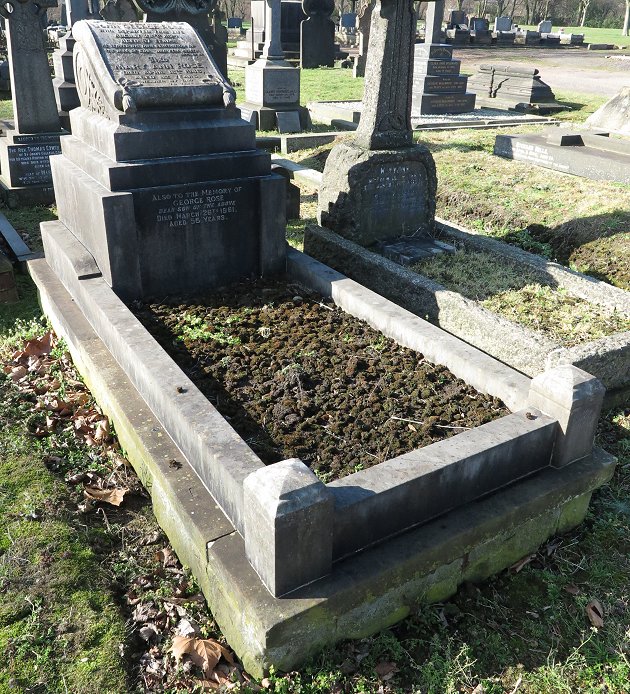
John George Rose's grave at
James Bridge Cemetery.
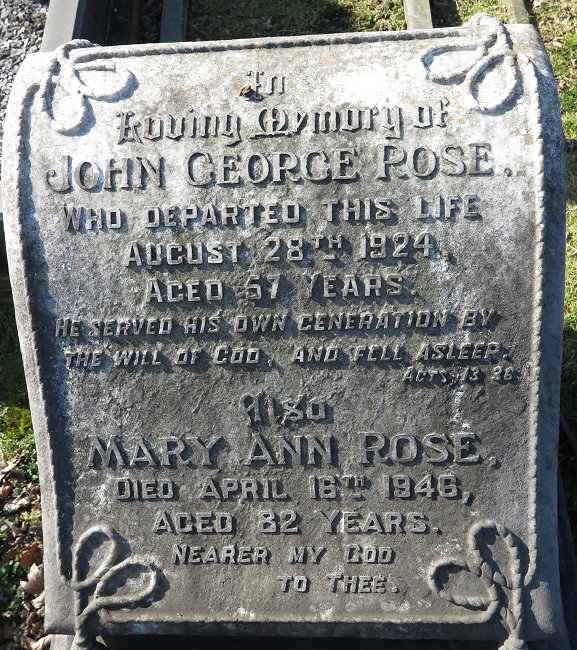
The inscription on the grave,
which also contains the remains of their son, George
Rose.
|
| William Walker Stanbury William Walker Stanbury was once a
well-known, and well-respected figure in Darlaston, who
became one of the town’s leading citizens. He was born in
1877 at Durston in Somerset, where his father William
Stanbury was a farmer, with 105 acres, employing 2 men and 2
boys. William married Betsy, and they had four children. The
eldest were two sisters Bessie and Helena, followed by their
first son Tom, then by William Walker, their youngest child.
William Walker Stanbury came to Darlaston in 1907
and purchased Poplar House, one of the last
remaining town houses in King Street, where he lived
with his wife Florence, and added a single story
extension to the front, to house his gents
outfitters and drapery shop. For some years he had
a second shop on the opposite side of King Street,
in Victoria House, which still survives today. He is
mainly remembered for his shop in Poplar House,
which had once been occupied by one of Darlaston’s
first wealthy industrialists, Samuel Mills, his wife
Phoebe, and their family. Samuel, who owned the
Darlaston Steel & Iron Company Limited at Darlaston
Green, purchased the house in about 1840. |
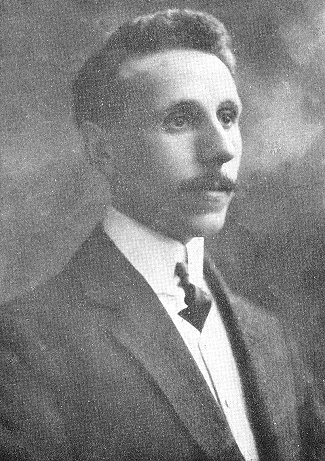
William Walker Stanbury in the
early 1920s. |
|
Some years later the famous Victorian
novelist Mrs Henry Wood stayed in the house, and whilst
there wrote part of her best selling novel "East Lynne",
published in 1861. The house later became a school for
girls.
Mr. Stanbury's business was very
successful and he became actively involved in public life, as
a local councillor, a member of many organisations and
committees, and a Justice of the Peace.
In 1918 he became a volunteer in the
South Staffordshire Regiment, as a 2nd Lieutenant. He
purchased a beautiful house called ‘Wellsacre’, in
Wrottesley Road, Tettenhall, no doubt named after the area
where he grew-up.
Sadly his wife, Florence Bessie
Stanbury, died on 11th December, 1931. She is buried in
Merridale Cemetery, Wolverhampton.
William was first elected as a member of
Darlaston Council in 1919, and served for three
years. He was again elected in April, 1928, and
became Chairman in 1933. He served on a number of
committees including the Higher Education
Committee, the Public Assistance Committee, the
Finance Committee, the Highways Committee, the
Housing Committee, the Child Welfare Committee, and
the General Purpose Committee.
He was also treasurer of the Unemployed Welfare
Council during the late 1920s and early 1930s
depression, a member of the Public Assistance
Committee for Wednesbury and District, a member of
West Bromwich and Staffordshire Assessment
Committee, and a member of the Poor Children's
Outing Committee.
He represented the town as a member of the
Association of Midland Local Authorities, and became
Darlaston's representative on the South
Staffordshire Joint Smallpox Hospital Board. He did
a lot of work for the British Legion, was President
of the Darlaston Allotment Association, and Chairman
of the Darlaston Tradesmen's Association, that
helped to cultivate a friendly feeling between
fellow tradesmen, and looked after their interests.
The Association exposed trading
abuses, helped in settling grievances, and attempted to
remove any restrictions on trading activities. In the mid
1930s he became a Justice of the Peace.
The King Street shop remained in use
until the 1960s, after which it fell into dereliction
and was demolished in 1973. The site is now occupied by
the ASDA store. |
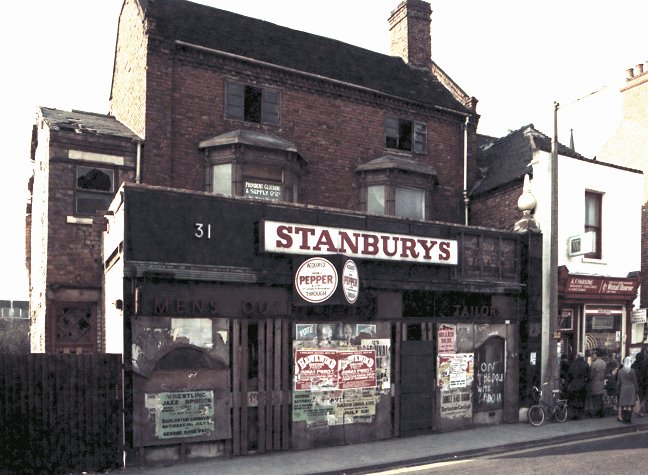
Stanbury's once well known shop at 31
King Street, awaiting demolition in the early 1970s.
| Enoch Horton
Enoch Horton and his father founded Horton & Son,
one of Darlaston's most important nut and bolt
manufacturing firms. He ran the business for many
years and became extremely wealthy. |
|
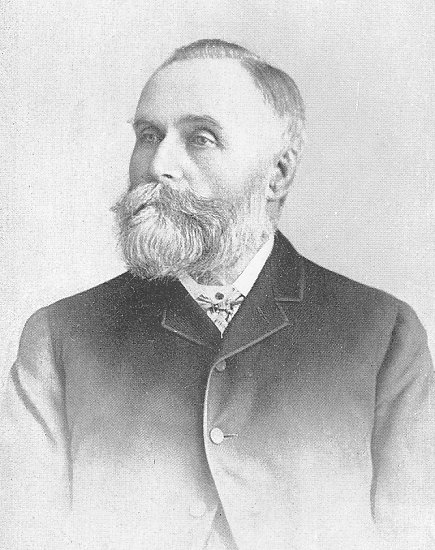
Enoch Horton,
J.P. |
Enoch Horton was
born in Darlaston on 10th April 1829
and educated locally. His mother
died at an early age, and so Enoch
started work at the age of seven,
making waxed hemp threads for
shoemakers.
Over the next ten
years he had a variety of jobs. For
about five years he worked at
Darlaston Green Ironworks, owned by
Samuel Mills, then becoming a
bellows blower for a local gunlock
maker, and later finding employment at a foundry in Spring
Vale.
At the age of
seventeen he became a nut and bolt
forger working with an Oliver, and
in 1849 entered into partnership with his
father, and they started business in
Bell Street.
The venture was so
successful that a larger factory was
soon acquired, and so in 1852 the Old Alma
Works were converted from a
wire-drawing mill into a nut and
bolt factory. |
| The
partnership with his father ended,
on his father's retirement in
1864, and in 1870 work began on the
first part of New Alma Works in
Station Street. The business grew to
become one of the largest
manufacturers in the trade. In
addition to being managing director
and sole proprietor of Messrs.
Horton & Son, Limited, Mr. Horton
became sole proprietor of Messrs.
Enoch Wilkes & Company, Britannia
Works, Darlaston, and also for over
thirty years, manufactured bricks.
New Alma Works was extended to join New Britannia Works,
and by
the early years of the twentieth
century, the firm employed over 600
people.
He was a director of a number of
local companies, and became a member
of Darlaston Local Board, and
succeeded Mr. James Slater as
chairman. On the formation of the
District Council, Mr. Horton was
elected a member, and retained his
seat until the time of his death,
twice becoming chairman.
He was a
member of the School Board
throughout the whole of its
existence, and was chairman for
twelve years. He was also a member
of Staffordshire County Council,
defeating Mr. J. Yardley in a
memorable election to fill the
vacancy caused by the death of Mr.
James Slater.
|
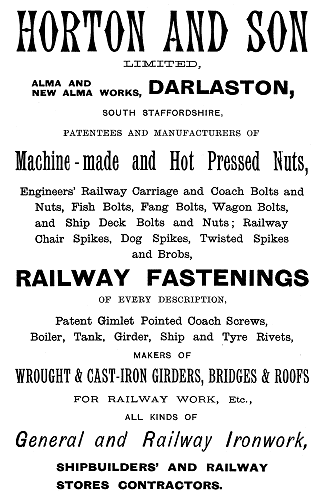
An advert from 1900. |
| Mr. Horton was also a County
magistrate, and an ardent Liberal.
He was a Wesleyan Methodist, and
gave many thousands of pounds to the
cause. He was also largely
instrumental in the erection of
Pleck Methodist Church, giving and
collecting £2,000 for the building,
and erecting, at his own cost, a
handsome choir vestry. Enoch became a wealthy man, and
acquired Bescot Grange which was
opposite Bescot Hall, the home of
James Slater. He was also Chairman of the West Gloucester
Water Company, a member of
the Institute of Mechanical
Engineers, and a member of the Iron
and Steel Institute.
In the latter part of his life he
suffered from heart
problems, and died at Bescot Grange
at the age of 76, on the evening of
Monday 15th May, 1905 after an attack of
pneumonia . Shortly before
his death, a fund was set up pay for
a portrait in oils, which would be
presented to him in recognition of
his long public service. The sum of
£385 was quickly raised. When he
died he left behind an estate valued
at £160,808.
|
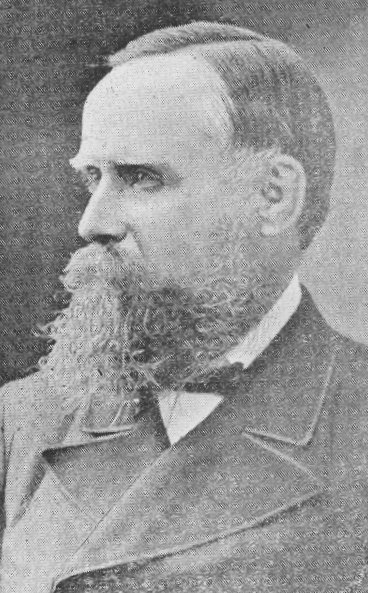
Enoch Horton,
J.P. |
|
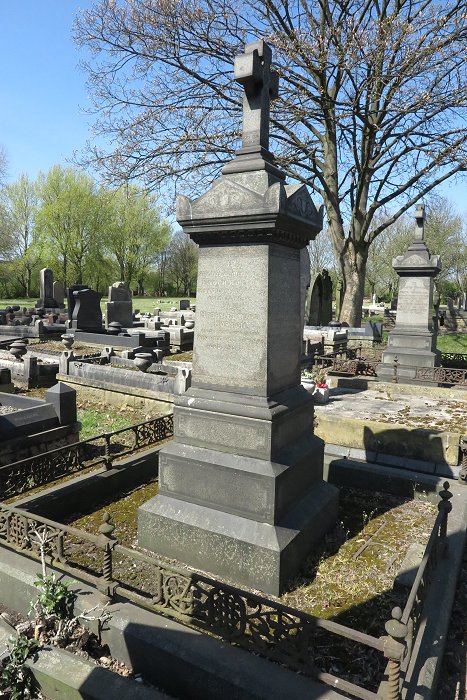
The Horton family
grave at James Bridge Cemetery. |
The inscriptions include the following: In Affectionate Memory of
Enoch Horton
who died May 15th 1905
Age 76 Years
Also
Harry Edward Horton
eldest Son of the above
who died December 20th 1905
Age 45 years
In Affectionate Memory of
Edna, beloved Wife of Enoch Horton
of The Grange Bescot
who died at Aberystwyth
August 27th 1894
Age 62 years
Also of Mrs. Nellie Mentz Tolley
of Lynn Hall Lichfield
Daughter
who died 25th July 1923 |
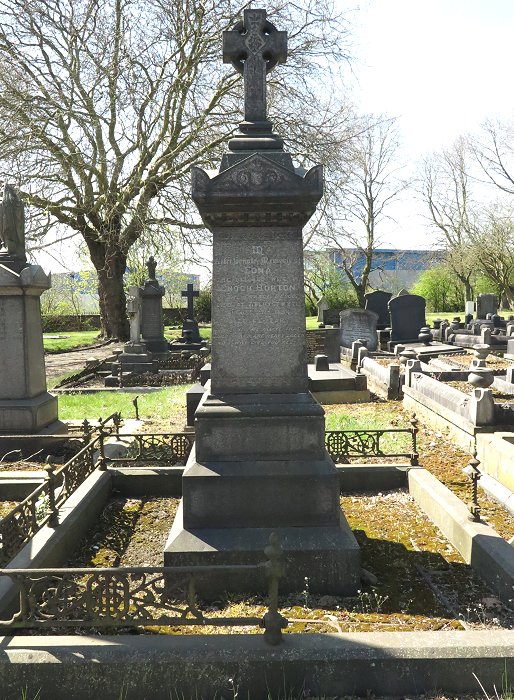
Another view of the grave.
| James Belcher
James Belcher founded the once well-known firm of
auctioneers, J. Belcher & Son. They were based in
Pinfold Street, on the corner of Great Croft Street,
opposite the Old Castle Hotel. What follows is his
obituary from the 1906 edition of Ryder's Annual. |
|

Mr. James Belcher. |
Mr. James Belcher, F.A.I., who
died on 4th November, 1905 was head of one of the
best-known firms of auctioneers in the Midlands.
He was born at Darlaston in
September, 1831, his parents having moved there from
Wednesbury. He was educated at the British School,
Darlaston, and afterwards privately, and in 1849
became a schoolmaster himself, and founded the
"Darlaston Academy," an institution which
accommodated day scholars and boarders, and
gradually became one of the largest educational
establishments in the district.
Mr. Belcher continued in the
scholastic profession for twenty four years, after
which he became an auctioneer, and soon established
a flourishing business. For about thirty years he
acted as poor rate collector and assistant overseer,
positions he continued to hold up to the time of his
death.
The firm, since 1882, has
included the deceased gentleman's son, Mr. A. D.
Belcher, who has assisted materially in the
development of the business, of which he now becomes
the head. |
|
In the public and religious
life of the district Mr. Belcher took an important
part. He was one of the first members of Wednesbury
School Board (1870-1879), and a member of Darlaston
Local Board from 1879-1888. He was a prominent
member of the Primitive Methodist Church, and as a
local preacher, an office he held for nearly fifty
years, was a great favourite with all his
congregations. He had represented the Connexion in
all its courts, and was many times appointed to
conference.
In the year of the Queen's
Jubilee he had the honour or addressing a missionary
meeting in Spurgeon's Tabernacle, and was always
extremely popular as a reciter in the days of "Penny
Readings" as a connective reader in "services of
song," and there are few Nonconformist places of
worship in the neighbourhood which he has not served
in this and other ways. Mr. Belcher had a fine
presence and was the essence of geniality. He was
one of the best known figures in the Black Country,
and will be much missed. |
|

The offices of J. Belcher &
Son in Pinfold Street. |

An advert from 1916.
|
Samuel Rubery was born in
Darlaston in 1822. He founded and ran Samuel Rubery and Son,
iron and steel merchants, based at Blockall, and
became a wealthy man. His eldest son Samuel
became a clerk in the business.
Samuel and his wife Mary
had five children: Samuel, John Tunner, Jane,
Alma,
and Thomas William.
He became involved in local
politics and was a member of the Board of
Surveyors formed in 1846, Darlaston's first form of
local government. He later became chairman.
1870 saw the formation of
Darlaston's Local Board, formed under the terms
of the 1858 Local Government Act. Elections were
held in December 1869 and Samuel was elected as
a member. He became Chairman of the School
Attendance Committee, and later Chairman of the Local Board.
He was also a churchwarden at St. George’s
Church.
By 1880 Samuel and
his family had left Darlaston and were living at
Gunstone House, Brewood. He continued to run the
business, and is described in the 1881 census as
an iron merchant and a farmer.
Samuel died in early 1884. |

Samuel Rubery. |
| In 1884, Samuel's three sons, John
Tunner, Samuel, and Thomas William acquired
the Victoria Ironworks in Booth Street and
founded Rubery and Company, which later
became Rubery Owen. Samuel Rubery and Sons
continued in business after Samuel's death
in 1884. It was then run by his sons Samuel,
and Thomas William. The business was
dissolved by mutual consent on 29th April,
1893. |
 |
 |
 |
Return to The
Close of the Century |
Return to
Contents |
Proceed to
Darlaston Pubs |
|